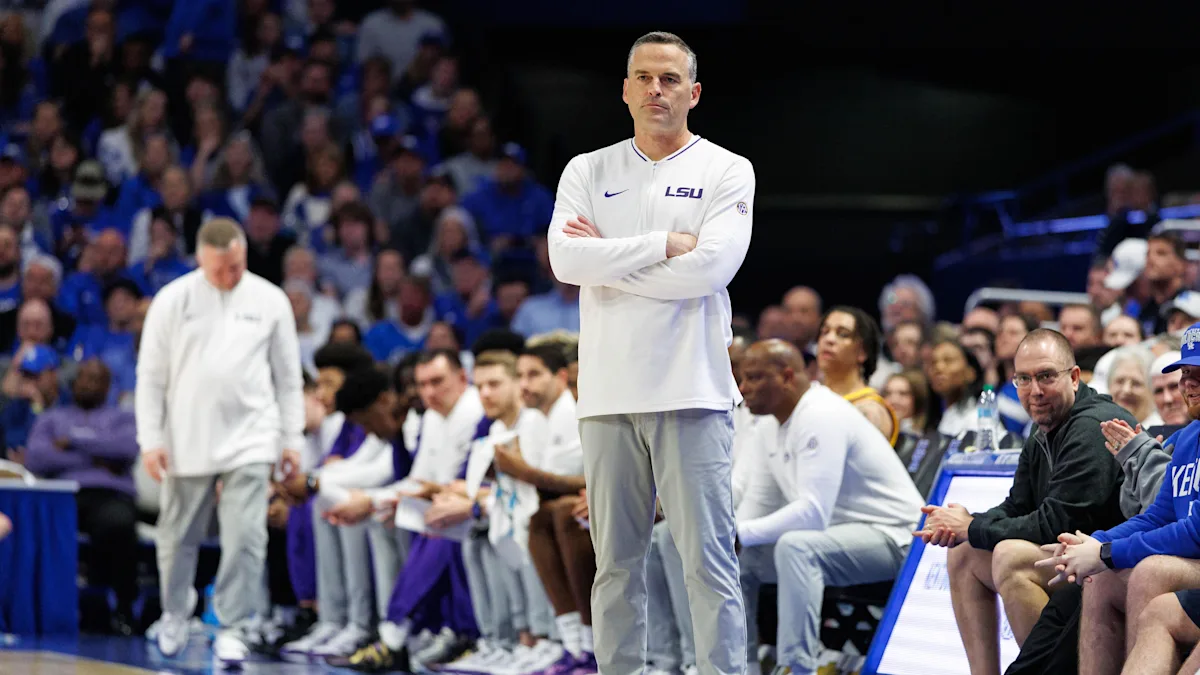Several Tigers leave the LSU basketball program and use the NCAA transfer portal.
The Louisiana State University (LSU) basketball program is facing significant change as several key players have decided to leave the program and enter the NCAA Transfer Portal. This development comes as a surprise to fans, particularly as the program had been building momentum in recent seasons. The Transfer Portal, which has become a primary route for college basketball players seeking new opportunities, has already seen its first wave of LSU players making the move. This shift represents the larger trend of increasing player movement in collegiate basketball and is emblematic of the challenges facing both programs and players in the evolving landscape of college sports.
The transfer portal has become a central aspect of the modern college basketball ecosystem. It allows players to test the waters of transferring to other schools without necessarily committing to a new program right away. While the portal has been praised for giving student-athletes more freedom and control over their careers, it also presents challenges to coaches who have to navigate this new dynamic in recruitment and roster management. For LSU, this latest batch of transfers signifies a period of adjustment for a program that has fluctuated between success and rebuilding in recent years.
The Departure of Key Players
LSU’s basketball team has seen a number of players enter the transfer portal, with several former standouts leaving the program. These departures are particularly noteworthy given that LSU had been developing a relatively young and promising roster. The loss of these players presents new challenges for head coach Matt McMahon, who is working to reestablish LSU as a competitive force in the Southeastern Conference (SEC) and on the national stage.
Among the first players to announce their departure were several key contributors who had played significant roles in LSU’s recent seasons. One of the most high-profile departures came from a former highly recruited player, who had shown flashes of brilliance in his time with the Tigers but struggled with consistency. His exit leaves a hole in the roster, both in terms of talent and depth, as LSU will need to find a way to replace his scoring and playmaking ability.
Another significant departure was a veteran player who had provided leadership on the court and in the locker room. This player had been a consistent starter for LSU and had played a crucial role in the team’s defensive schemes. His absence leaves a leadership void that LSU will need to address in the upcoming season. In addition to these departures, there were a few role players who contributed valuable minutes off the bench, but their exits create further uncertainty for the Tigers as they head into an offseason of rebuilding.
The Impact on LSU’s Program
The impact of these transfers is multifaceted. On the one hand, LSU loses experienced players who had already acclimated to the program’s culture and style of play. With several key players departing, Coach McMahon is left with a depleted roster and fewer established contributors for the upcoming season. For a program looking to compete in the highly competitive SEC, these losses could put LSU at a disadvantage in recruiting and team development.
On the other hand, LSU’s program is still relatively early in the rebuilding process. Coach McMahon, who took over the team in 2022, inherited a squad that was in need of an overhaul. The program had been through a tumultuous period with coaching changes, NCAA sanctions, and roster turnover. While McMahon had been working to build a strong foundation for the Tigers, these transfers present a setback that will require him to adjust his approach. Rebuilding a team from scratch is never easy, and these departures underscore the difficulties LSU faces in reestablishing itself as a dominant force in college basketball.
The timing of these departures is also crucial. As LSU heads into the offseason, the coaching staff must scramble to fill the gaps left by the departed players. Recruiting will take on even greater importance, and the Tigers will need to secure both high school talent and transfers to bolster their roster. The transfer portal itself is a double-edged sword; while it offers opportunities to acquire immediate contributors, it also highlights the growing instability within college basketball programs, especially in the wake of coaching changes and player departures.
The Transfer Portal Landscape
The NCAA Transfer Portal has reshaped the college basketball landscape over the last few years. Introduced in 2018, the portal allows players to enter their name in the system and explore transfer options without facing penalties. This has led to an increase in player movement, and many programs, including LSU, have become accustomed to roster turnover from year to year.
For players, the transfer portal presents an opportunity to seek better playing time, a new environment, or a change of scenery. However, for coaches and programs, the portal has created a sense of instability. Recruiting is no longer just about high school prospects but also about navigating the unpredictable world of transfers. This is especially challenging for programs like LSU, which are in the midst of a rebuilding phase. While the portal allows for quick fixes, it can also be a reflection of deeper issues within a program, such as player dissatisfaction or coaching instability.
The LSU basketball team is not alone in experiencing this trend. Across college basketball, the portal has led to significant player movement, with some programs losing a large portion of their rosters to transfers. For LSU, these departures may signal a larger shift in the culture of the program. As Coach McMahon works to create a new identity for the Tigers, he must find ways to attract and retain talent while dealing with the realities of an ever-shifting roster.
Coach Matt McMahon’s Challenges and Strategy
Matt McMahon, who was hired as LSU’s head coach in March 2022, faces a challenging task in rebuilding the Tigers’ basketball program. McMahon came to LSU after a successful tenure as the head coach at Murray State, where he led the Racers to multiple NCAA Tournament appearances. His ability to build competitive teams in a mid-major conference made him an attractive candidate for LSU, but the transition to coaching in the SEC has proven to be a daunting challenge.
The loss of multiple players via the transfer portal forces McMahon to re-evaluate his approach to team-building. One of the first challenges will be to stabilize the roster, focusing on adding players who fit his system and can contribute immediately. The recruitment of high school prospects, along with the identification of key transfer portal targets, will be critical to LSU’s success in the coming years.
Additionally, McMahon must cultivate a team culture that can withstand the pressures of roster turnover. Building relationships with his players, maintaining a strong locker room dynamic, and ensuring that LSU’s basketball program remains an attractive destination for top talent will be vital for McMahon’s long-term success.
Rebuilding the Tigers: A Long-Term Vision
Although LSU faces immediate challenges in light of these departures, the program does have a path forward. The Tigers will need to embrace a long-term vision of rebuilding, focusing on both player development and recruiting. As McMahon looks to reshape the roster, he will need to strike a balance between adding immediate contributors through the transfer portal and investing in the development of younger talent.
Additionally, LSU must improve its overall culture, creating an environment where players feel invested in the program and motivated to stay for the long haul. This may involve enhancing player support systems, including academic assistance, mental health resources, and personal development programs, which are becoming increasingly important in the recruitment process.
While the departures of key players are undoubtedly a setback, they also present an opportunity for McMahon to bring in fresh talent and reshape the roster to fit his vision for LSU basketball. In a sport where success often comes down to a combination of coaching, talent, and chemistry, LSU’s future will depend on how well McMahon navigates this period of uncertainty and builds a team that can compete at the highest level.
The LSU basketball program is in the midst of a challenging transition, marked by the departure of multiple key players via the NCAA Transfer Portal. As Coach Matt McMahon works to rebuild the team, the Tigers will face significant challenges in both recruiting and team development. The modern college basketball landscape, shaped by the transfer portal and increased player movement, presents both obstacles and opportunities for LSU as it looks to regain its competitive edge in the SEC and nationally.
While the departures are a setback, they also create space for new talent to enter the program, giving McMahon an opportunity to build a team that reflects his vision and philosophy. With the right balance of recruitment, player development, and culture-building, LSU has the potential to rise again as a formidable force in college basketball. The road ahead will undoubtedly be difficult, but with strong leadership and a commitment to long-term growth, the Tigers can look forward to brighter days.



